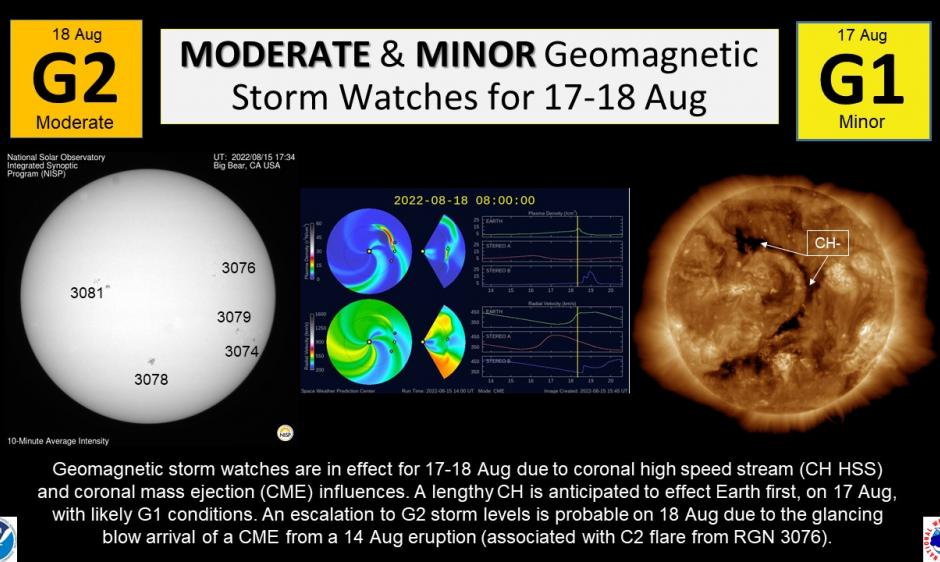
Geomagnetic storm watches are in effect for 17-18 August, 2022. A negative polarity coronal hole (CH) high speed stream (HSS) is likely to lead to G1 (Minor) storm levels on 17 Aug. Additionally, a coronal mass ejection (CME), which left the Sun on 14 Aug, is expected to arrive at Earth as a glancing blow on 18 Aug. This will likely lead to escalated geomagnetic response and G2 (Moderate) storm levels are probable. While, forecast confidence of an Earth-directed component to the 14 Aug CME is low-moderate, confidence in timing and intensity is lower.
When the CME approaches Earth, NOAA’s DSCOVR satellite will be among the first spacecraft to detect the real-time solar wind changes and SWPC forecasters will issue any appropriate warnings. Impacts to our technology from a G2 storm are generally nominal. However, a G2 storm has the potential to drive the aurora further away from its normal polar residence, and if other factors come together, the aurora might be seen over the far Northeast, to the far upper Midwest, across portions of the north-central states, and perhaps over the northwest section of Washington state. For additional information about space weather, geomagnetic storms, aurora and viewing tips, and CMEs – click the terms. NOAA's Space Weather Prediction Center is the official source for space weather forecasts, watches, warnings and alerts. Visit www.spaceweather.gov for updates. Learn about Solar Cycle 25.